What Once Was, or May Have Been; The Lost Gardens and Garden Structures at Montgomery Place
Walking the grounds of Montgomery Place today, one can clearly see the mark left on the landscape by two of its nineteenth century inhabitants, Louise Livingston and her daughter Cora Barton. It was Louise Livingston who originally transformed the agricultural estate she and her husband inherited into a romantic, ornamental country place (with a little help and influence from Messrs. AJ Downing and AJ Davis), her daughter Cora enthusiastically taking up the torch afterward. The gently curved paths, clumps of trees, and specimen plantings gives the impression that they strove for a very natural, albeit enhanced, look. Looking from the entrance across the broad greensward towards the arboretum, it is hard to imagine this sublime view is nothing less than how they had intended it to look.
It may come as a shock for the modern visitor to learn then, that their vision for this landscape included multiple gazebos, arbors, parterres, an elaborate conservatory, and copious amounts of statuary.
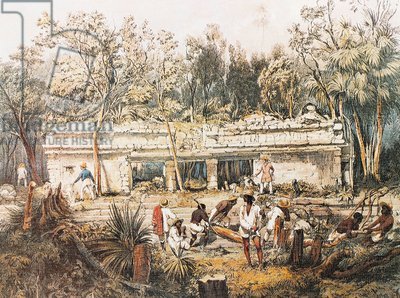
In 1839 Louise had the architect Frederick Catherwood design a conservatory for the grounds to replace the simple working greenhouse built by the estates’ original owner, Janet Livingston Montgomery. Catherwood is best remembered today for the detailed drawings of Mayan ruins he did while exploring meso-America.
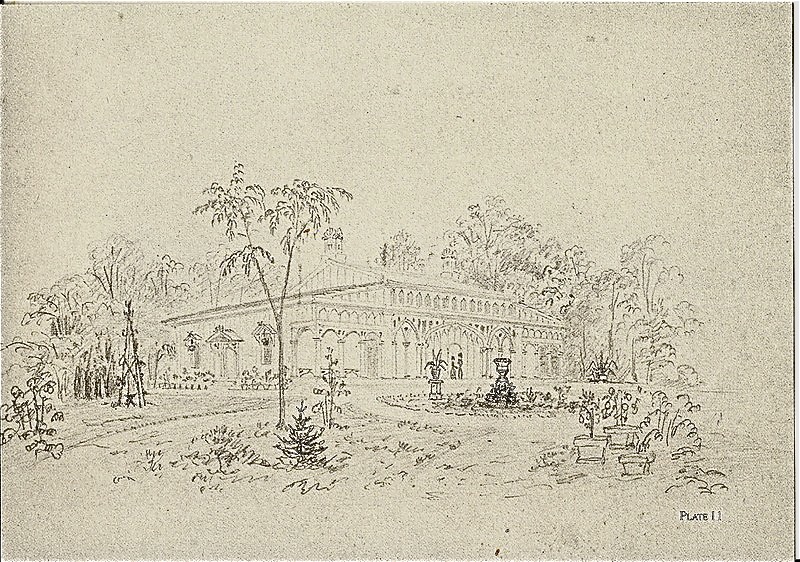
Upon inspection, it is not a stretch to see how the mass and shape of these ruined temples from the jungles of Central America might have influenced his design of the conservatory at Montgomery Place.
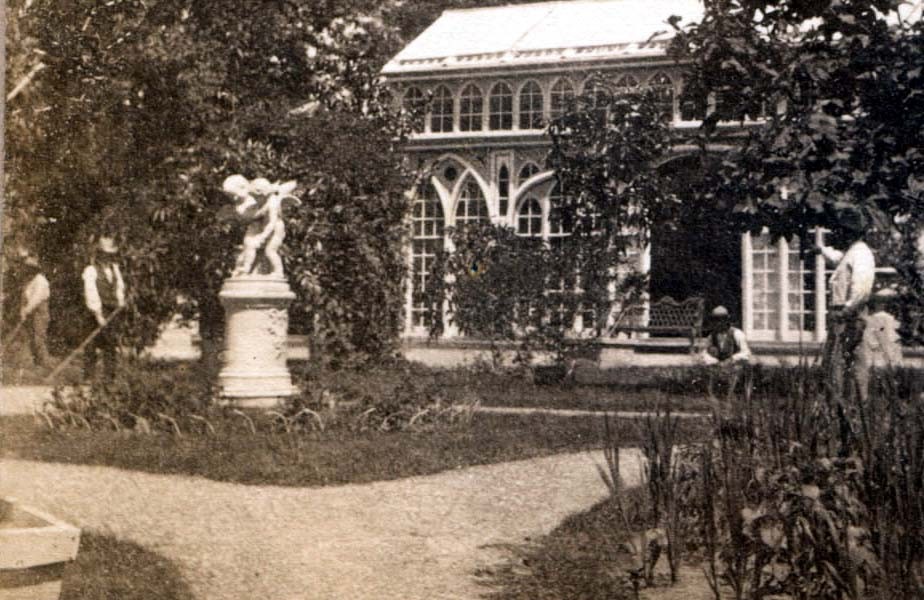
From the sketch above, surrounded by trees, and its emphasis on the horizontality of the structure, one could be forgiven in thinking, despite its gothic tracery, the structure was meant to blend in with the natural surroundings. This period photograph paints quite a different story however.
The conservatory actually served as a backdrop for elaborate parterre beds of exotic flowers, graveled paths, wrought-iron garden furniture, and playful neoclassical putti statuary.
In addition to the exuberant gardens lying between the front of the house and the conservatory, there exists evidence of a number of additional fanciful garden structures planned for the property. These gazebos were designed in a number of different styles, including

gothic revival,
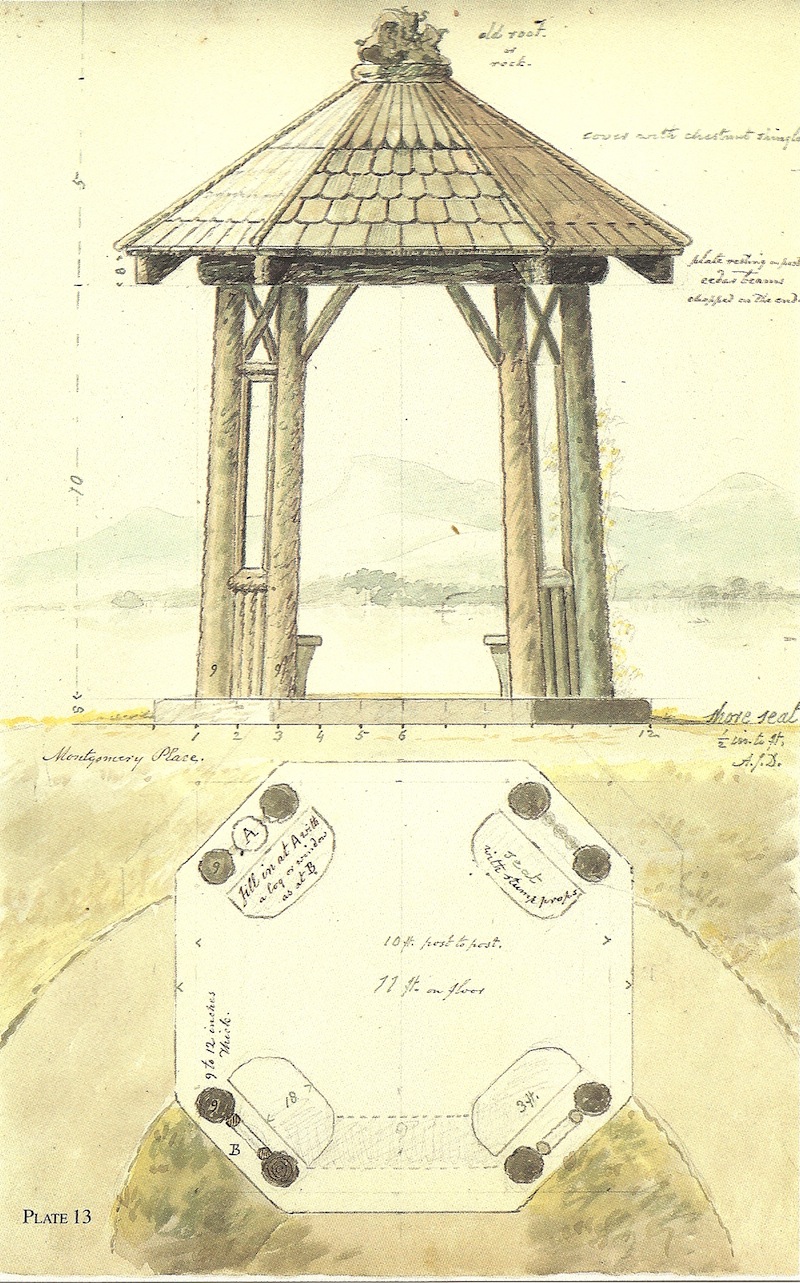
rustic,
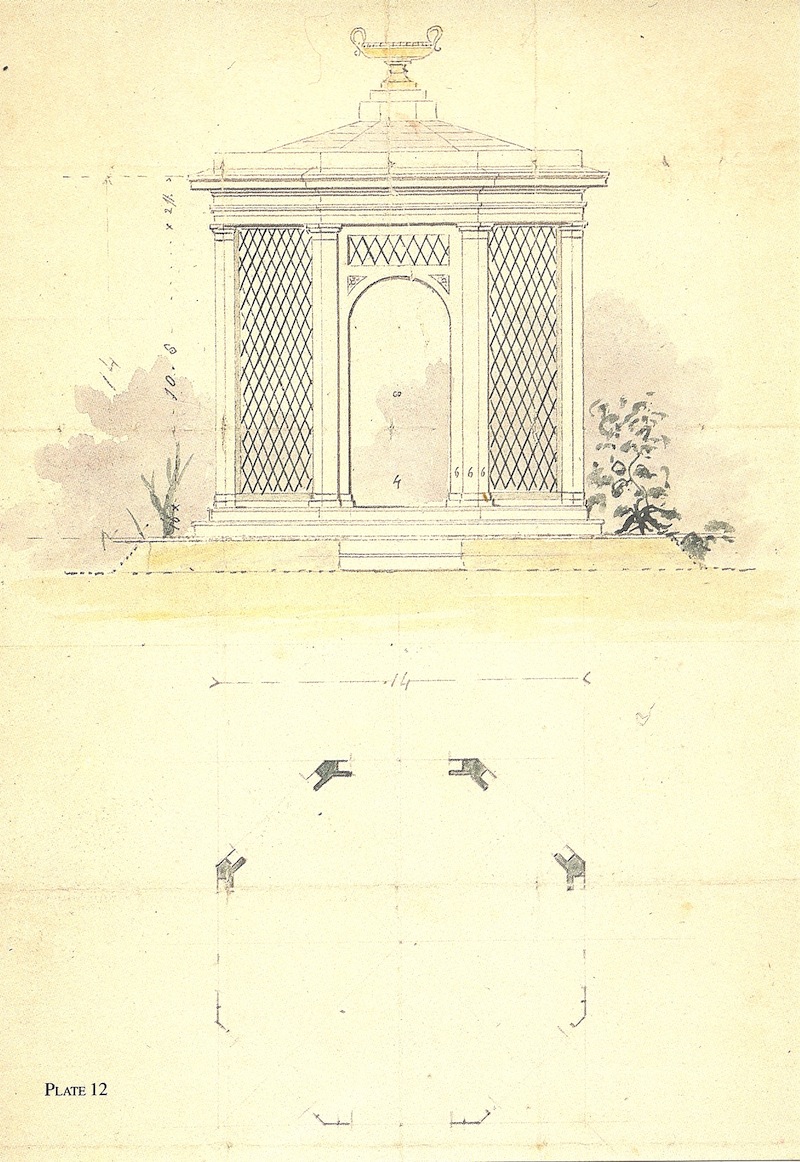
neoclassical,
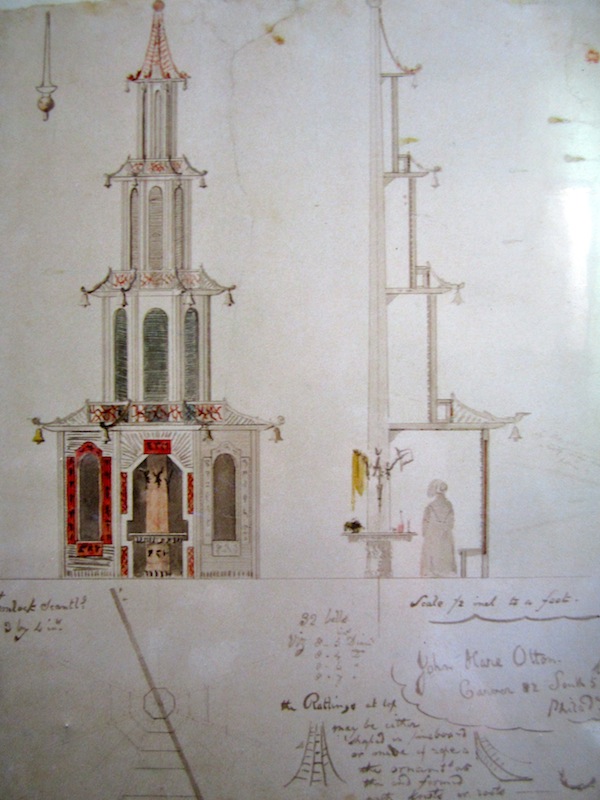
and my favorite, this fanciful chinoiserie-style pagoda.

How many of these designs actually made it from the drawing stage into actual structures isn’t certain. A watercolor sketch of Montgomery Place done by AJ Downing depicting a neoclassical gazebo gracing a hillock between the mansion and the river provides evidence that at least one was built.
Had they all been constructed, Montgomery Place may well have become renowned as a uniquely American equivalent of the great landscape gardens at Stowe.
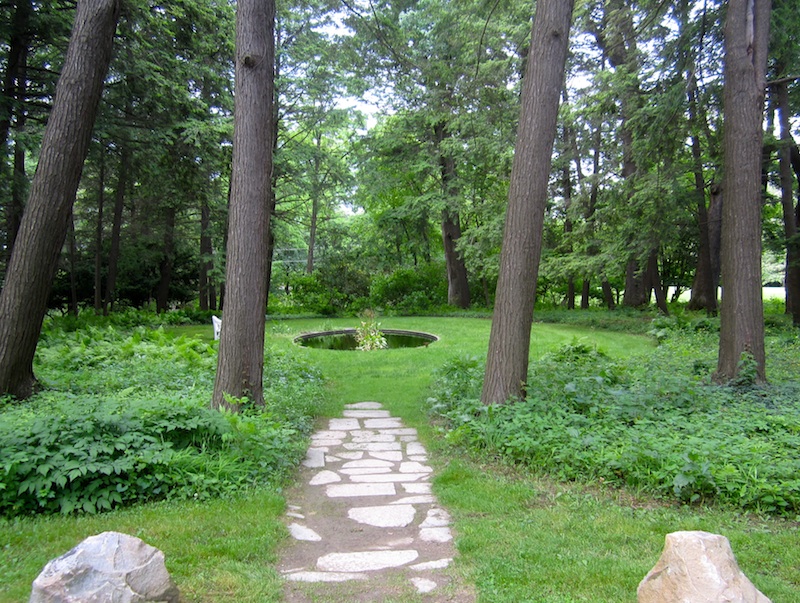
After Cora Barton passed away in 1873, distant cousins retained tenancy in Montgomery Place. The gardens and the structures languished and decayed for several decades before the property came into the possession of the Delafield family. The conservatory, badly deteriorated and too expensive to repair or replace, was razed. How many other ornamental pavilions may have suffered the same fate is not clear. In the twentieth century, the gardens at Montgomery Place were reborn, under the capable hands of Violetta White Delafield. Not however, in the elaborate style of The Livingston and Barton eras. The parterre beds disappeared and the neoclassical statuary was stored away the carriage house. Mrs. Delafield created a series of garden rooms, including an elliptical garden, a wild garden and rose garden, serviced by a charming but smaller scaled potting shed and greenhouse, as dissimilar to Catherwood’s great conservatory as it could be. While delightful to look at and beautifully sited within the grounds, today’s visitor would be well served to stop in front of the house for moment and imagine the very different impression the fantastic landscape elements from the mid-nineteenth century would have made.
To read more about the gardens and landscape at Montgomery Place , click here.



